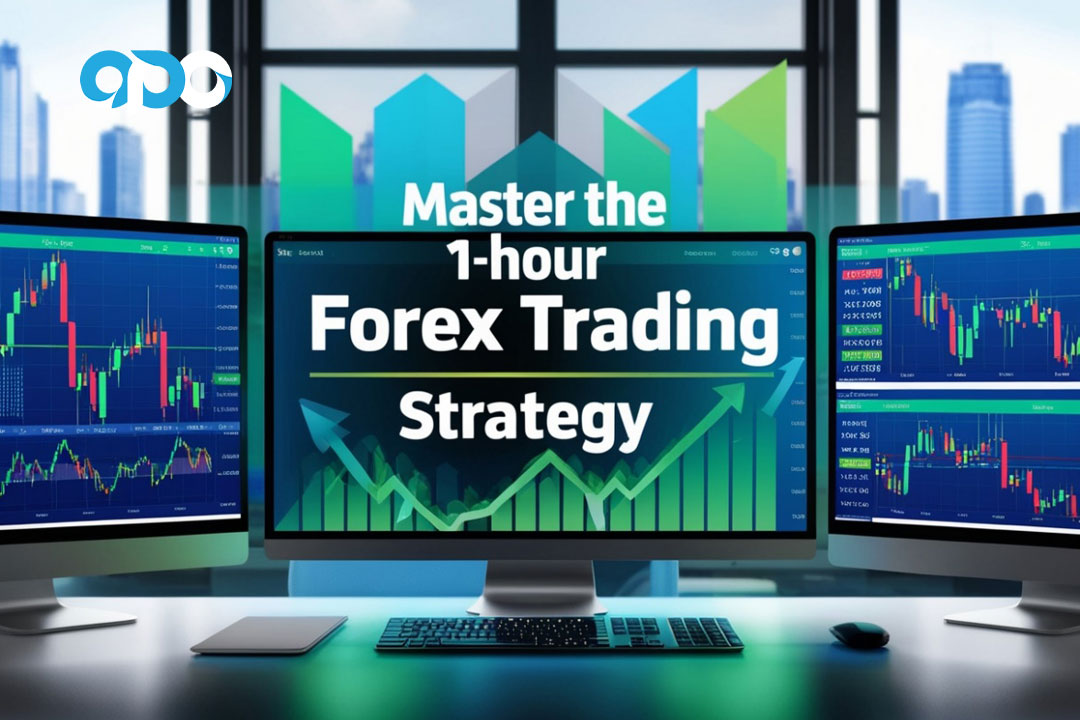New Advice On Selecting Forex Trading Sites
Top 10 Risk Management Tips When Trading Forex OnlineForex trading success is dependent on how you manage your risk. Here are the top 10 risk management tips to protect your capital and manage potential losses:1.
Make Stop-Loss order on each trade
1. Stop-loss orders close trades automatically when the market reaches an agreed price. This helps limit losses. Create a stop loss to make sure you don't lose more than what you can afford in the event the trade goes against you. It is recommended to set the Stop-Loss in place as soon as you start a new trade.
2. Define Risk per Trade
Limit the risk you take per trade. It is generally recommended to limit it to not more than 1-2 percentage. You can remain on the market even during a losing streak and not risk having your account wiped out.
3. Use Proper Position Sizing
When you talk about the size of your position, it's the amount you buy or trade in a specific currency. Change your position size based on your account size and the risk of the trade and the distance between your stop-loss. If you've got a significant stop-loss, then your size of the position will be reduced to remain at the same risk level.
4. Avoid Over-Leveraging
Both losses and gains are amplified by high leverage. Beginners should only use low-leverage however, brokers often offer higher leverage. The high leverage could quickly degrade your account if trades go against you. It's recommended to begin with a low leverage (1:10 or less) until you've gained experience.
5. Diversify Your Trades
Avoid investing all of your capital in a single trading or pair. Diversifying your trading by using different timeframes or pairs can decrease the possibility of losing money due to unanticipated circumstances. Avoid too much diversification because it can dilute focus and spread out your trading too thinly.
6. Create an Investment Plan With Risk Limitations
A trading plan with clear rules on entry and exit as well as risk tolerance helps you maintain discipline. Set daily or week-long risk limits. It's not ideal to risk more than 5 percent of your account each day. Take a break when you've hit your limit. Do not keep trading because of feelings of anger or discontent.
7. Use Trailing Stops for Locking in Profits
Trailing losses are a, adjustable stop-loss. It adapts itself when the market moves towards your advantage. This lets you make gains if the market turns but also allows your trade to expand when it's going in the direction of profit. This is a great way to safeguard your profit without having to close the trade early.
8. Stay in control of your emotions and avoid revenge trading
Emotional trading often leads to poor decision-making and excessive risk. Anger, fear, and greed may cause traders to trade in a hurry or take more risks than you anticipated. Avoid revenge trading or trying to recover losses with one trade after a losing trade. Avoid escalating loss by sticking to your risk limit and your strategy.
9. Avoid Trading During High-Impact News Events
The market can become very volatile after high-impact news is announced, such as central bank decisions and economic reports. If you're not experienced about news trading, it's wise to stop trading or stop trading prior to and right after important announcements. This could lead to unexpected losses.
10. Keep a Trading Journal To Analyze Mistakes
A journal can help you learn from both your trading losses and wins. Record details about each trade, such as the reason why you entered and the amount of risks, stop-loss locations, and the outcome. You can increase your risk control by periodically checking your journal of trading.
In Forex trading, risk management is as vital as identifying profitable opportunities. These strategies can help you control your losses, secure your capital, and establish an effective long-term strategy for trading. Read the recommended https://th.roboforex.com/ for blog recommendations including forex trading brokers list, best currency brokers, best currency trading app, forex trading strategies, forex trading brokers list, forex trading strategies, fx trading forex, forex market online, broker trading, top forex brokers and more.

Top 10 Technical And Fundamental Analysis Tips When Trading Forex Online
In Forex trading, both technical and fundamental analyses are important. Mastering both can improve your ability to make strategic and more informed decisions. Here are 10 strategies for using technical and fundamental analyses in online Forex trading.
1. Find the most important levels of support and resistance
Support and resistance levels are levels at which currency pairs often pause, or even reverse. These levels serve as psychological barriers, which makes them essential for planning entries and exits. It is crucial to identify these zones to understand the areas how the market will be headed or where it could begin to break out.
2. Multi-timeframes offer a an expanded perspective
Examining charts using different timeframes (e.g. daily, four hours or 1 hour) can provide insight into trends and the overall picture. Lower timeframes provide a better understanding of the trends.
3. Master Key Technical Indicators
Moving averages, Relative Strength Index and Moving Average Convergence Divergence are among the most significant indicators used in Forex trading. To improve your accuracy, learn how each indicator works and how you can combine the two.
4. Candlestick patterns are crucial to take note of
Candlestick patterns, including dojis, hammers and Engulfings, could indicate a potential continuation or reverse. You can recognize price movement shifts by becoming familiar with these patterns. Combining candlesticks with other tools such as support/resistance can help you improve your trading timing.
5. Trend analysis can provide directional clues
Utilize trendlines and moving averages to identify market trends. Forex traders usually follow the trend as it provides more reliable outcomes. The opposite of the trend is not advised unless you have a lot of experience.
Fundamental Analysis Tips
6. Understand Central Bank Interest Rates and Policies
Central banks like the Federal Reserve or the European Central Bank control interest rates that have an impact directly on the value of currencies. Rates of interest that are higher tend to increase the strength of the currency. In contrast, lower rates can weaken a currency. Keep an eye on central bank releases because they can create big market shifts.
7. Follow the Economic Indicators and Reports
The most important indicators of economic health such as the unemployment rate, GDP, consumer confidence, inflation and consumer confidence provide understanding of the nation's economy and impact the value of its currency. Keep up to date with the latest economic releases and evaluate how they impact your currency pairs.
8. Examine Geopolitical Events and News
Politic events like elections trade talks, elections, and conflicts can have an impact on currency markets. Stay informed about global news, particularly in relation to major economies like the U.S.A., Eurozone and China. You should be ready to adjust your strategy if political events in the world cause instability.
Combining Technical and Fundamental Analysis
9. Aligning technical signals with fundamental Events
Combining technical analysis with fundamental analysis will improve your decision making. For example, if the technical setup shows an uptrend and a positive economic report is expected, these two factors can confirm a stronger buy signal. Aligning both approaches helps reduce uncertainty and improves the chance of successful trading.
10. Trade Risky Events
The reason for volatility is usually major events that have a high impact, such as Federal Reserve meetings and non-farm payroll releases (NFP). This can result in rapid price fluctuations. Since they can be unpredictable most traders avoid trading during these events. If you've been through it however, you are able to benefit from the price movements through the analysis of technical aspects. Be careful, set tight Stop loss orders, and be prepared to react rapidly.
Forex traders benefit from an knowledge of market dynamics by integrating both technical and fundamental analysis. When they master these strategies, traders will be able to navigate the markets for foreign exchange more effectively, make more strategic choices and improve their overall performance. Read the top for site examples including best forex trading platform, forex broker, forex broker platform, trading foreign exchange, best forex brokers, regulated forex brokers, top forex trading apps, brokers for forex in usa, fbs review, forex trading trading and more.

Ten Tips For Developing Your Skills In Forex Trading And Demo Trading.
Demo trading is an excellent opportunity to build your knowledge before you trade using real money. Here are 10 tips for improving your Forex trading skills and increase your demo account experience.
Treat Your Demo Account Like a Real Account
1. To make the most of your demo account, it is important to take it in the same manner as if it were an actual account. Setting risk limits, carefully making trades and managing your position as if the real world was on the line are all aspects of this. This helps build solid trading habits that which you can apply into real-time trading.
2. Create and test the trading Plan
Create a trading plan with the demo account. This should include risks management guidelines and sizing of positions as well as exit and entry strategies. Test your trading plan in various trading scenarios, and in various market conditions. The strategy can be modified based on the results. This will create a more consistent strategy.
3. How to use the trading platform
Get familiar with all the functions available of your trading platform. This includes charting tools and risk management settings and order types. This will boost your confidence and effectiveness, decreasing the possibility of making a mistake when you make the switch to live trading.
4. Different Trading Strategies
Demo accounts are a great method to experiment with various strategies and discover the things you enjoy about. Test each strategy to discover its strengths, weaknesses, and how it will work with your style of trading and timetable.
5. Apply Risk-Management Techniques to Your Practice
Make use of the demo account as an opportunity to try creating stop-losses. It is essential to understand how to manage risks effectively to ensure long-term financial success. Make sure to practice risk management until it becomes second-nature.
6. Track and Analyze Your Trades
Keep a comprehensive journal of your trading activities where you document every trade, including reasons for entry and exit, trade outcomes, as well as any emotions you experienced in the course of trading. You can refine your trading strategies by regularly reading your journal.
7. Simulate real market conditions
Try to recreate the kinds of trades, leverage and positions you'll be using in your live account. Avoid big or unrealistic trades. They will not accurately reflect the real-world conditions that you will face when trading using your funds.
8. Test Yourself Under Different Market Conditions
The Forex market can behave differently in different situations (trending, ranging, volatile or even calm). Test your strategy on a demo account in different scenarios, including significant events such as news, or when there is a period of low volatility. This will help you understand how to handle different scenarios during live trading.
9. Gradually increase complexity
Begin with the basics of strategies and indicators, and later introduce more advanced tools. It is possible to gradually increase your understanding of more advanced strategies and increase your confidence. This step-bystep guide will assist you in understanding the basics of strategy before you tackle more complex strategies.
10. Set a time limit for Demo Trading
Demo trading is a must however, you shouldn't be there for too long. Think about moving your account to a real one with the initial deposit only when you're consistently profitable and confident in your plan of action. Demo trading cannot fully mimic real trading.
Use these suggestions to get the most out of your experience with demo trading. They can also help you build the necessary skills for trading successfully on live Forex. Focus on consistency and continual advancement. View the top rated https://th.roboforex.com/about/company/documents/ for blog recommendations including app forex trading, foreign exchange trading platform, brokers for forex in usa, best forex trading platform, foreign exchange trading online, best rated forex brokers, forexcom, forex trading trading, best rated forex brokers, 4x trading and more.
